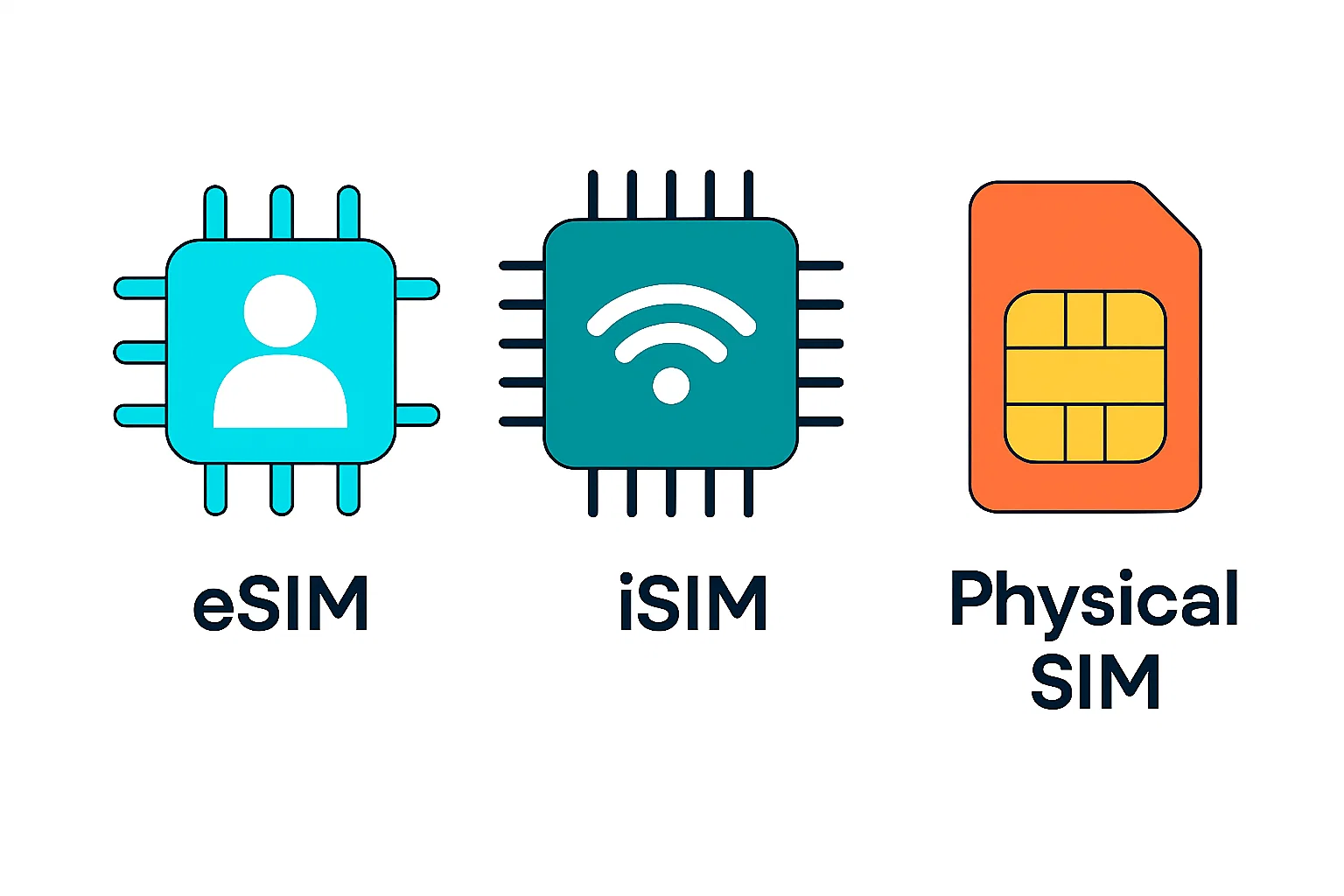eSIM vs. iSIM vs. Physical SIM What’s the Difference

Understanding SIM Technologies: eSIM, iSIM, and Physical SIM
If you've ever switched phone plans or upgraded your smartphone, you've likely encountered different types of SIM technology. While physical SIM cards have been around for decades, newer technologies like eSIM and iSIM are changing how we connect to wireless networks.
But what’s the difference between eSIM, iSIM, and physical SIM? And which one should you use?
This guide explains how each SIM type works, their benefits, and what they mean for your phone experience.
What is a Physical SIM?
- Best for: Users who frequently swap SIMs or travel internationally
- How It Works: A removable card that stores network credentials
- Availability: Used worldwide, but slowly being replaced by eSIM
A physical SIM (Subscriber Identity Module) is a small, removable chip inserted into your phone to connect to a mobile network. Most phones today use nano-SIMs, the smallest version of traditional SIM cards.
Key Benefits of a Physical SIM:
- Easy to swap between phones, just remove and insert into a new device
- No internet required to activate, just insert and start using
- Works with all carriers worldwide
Things to Consider:
- Risk of loss or damage as SIM cards can be misplaced or broken
- Requires a SIM ejector tool to switch between networks
- Limited dual SIM support as some phones only have one SIM slot
What is an eSIM?
- Best for: Users who want dual SIM functionality or frequent travelers
- How It Works: A built-in digital SIM that can be activated remotely
- Availability: Growing rapidly and supported by major carriers worldwide
An eSIM (embedded SIM) is a digital SIM that is embedded into the phone’s hardware, removing the need for a physical SIM card. Many newer smartphones, including iPhones and high-end Android devices, now support eSIM technology.
Key Benefits of an eSIM:
- No physical card needed, activate your plan digitally
- Supports multiple carriers and switching between providers without swapping SIMs
- Ideal for travel as you can add a local eSIM when abroad without removing your main number
Things to Consider:
- Not all carriers support eSIM so check if your provider offers it
- Switching phones isn’t as simple and requires carrier reactivation
- May need an internet connection to set up
What is an iSIM? (The Future of SIM Technology)
- Best for: Future-proof devices with even smaller SIM technology
- How It Works: Integrated directly into the phone’s processor
- Availability: Still emerging and expected to grow in the next few years
An iSIM (integrated SIM) is the next evolution beyond eSIM. Unlike an eSIM, which is embedded separately in the phone, an iSIM is built directly into the processor. This means no separate SIM module is needed, allowing for even smaller and more power-efficient devices.
Key Benefits of an iSIM:
- No physical space required and frees up internal phone space for better battery life
- More secure as its built into the chipset, reducing risk of hacking or cloning
- Ideal for IoT & wearables and can be integrated into smartwatches, tablets, and other connected devices
Things to Consider:
- Still in development and not widely available yet
- Switching carriers may be more complex and depends on manufacturer and carrier agreements
Quick Comparison: Physical SIM vs. eSIM vs. iSIM
Which SIM Technology is Right for You?
Choose a Physical SIM If:
- You frequently switch phones or carriers
- You prefer a plug-and-play solution without internet activation
- Your carrier doesn’t support eSIM yet
Choose an eSIM If:
- You travel frequently and want to switch networks easily
- You want dual SIM functionality without needing two slots
- You prefer a more digital and seamless setup
Choose an iSIM If (In the Future):
- You want next-gen technology built directly into your phone
- You use wearables, IoT devices, or compact gadgets
- You prefer maximum security and efficiency
Pro Tip: Many Phones Now Support Dual SIM (eSIM + Physical SIM)
Some of the latest smartphones, including iPhones and Android flagships, allow you to use both a physical SIM and an eSIM at the same time. This is perfect for:
- Using two numbers (personal & business) on one phone
- Keeping your primary number while adding a local travel SIM
- Managing data plans separately
Looking for the best eSIM or SIM plans in Canada? Use Fliq to compare plans and find the perfect option on your terms!
